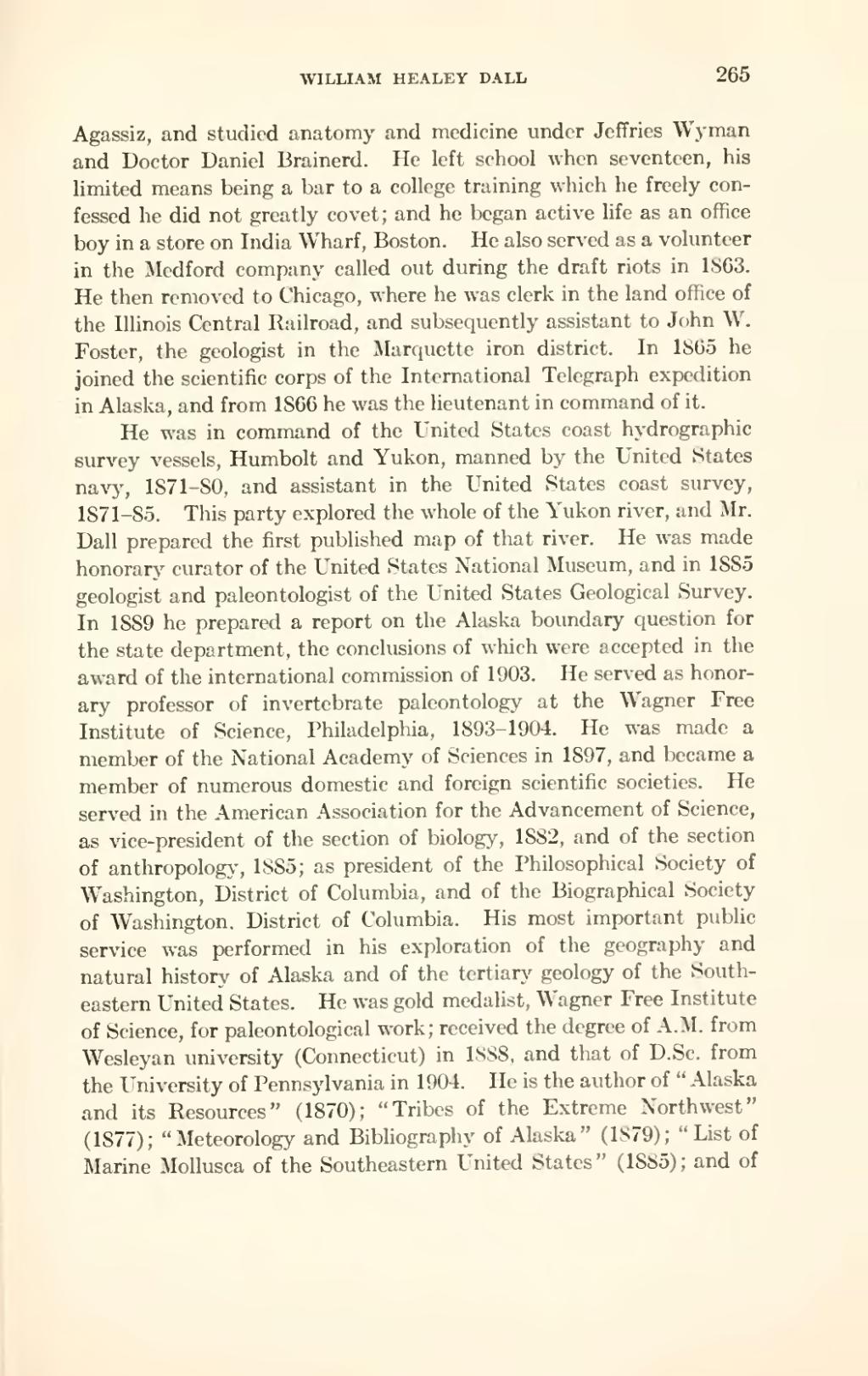Agassiz, and studied anatomy and medicine under Jeffries Wyman and Doctor Daniel Brainerd. He left school when seventeen, his limited means being a bar to a college training which he freely confessed he did not greatly covet; and he began active life as an office boy in a store on India Wharf, Boston. He also served as a volunteer in the Medford company called out during the draft riots in 1863. He then removed to Chicago, where he was clerk in the land office of the Illinois Central Railroad, and subsequently assistant to John W. Foster, the geologist in the Marquette iron district. In 1865 he joined the scientific corps of the International Telegraph expedition in Alaska, and from 1866 he was the lieutenant in command of it.
He was in command of the United States coast hydrographic survey vessels, Humbolt and Yukon, manned by the United States navy, 1871-80, and assistant in the United States coast survey, 1871-85. This party explored the whole of the Yukon river, and Mr. Dall prepared the first published map of that river. He was made honorary curator of the United States National Museum, and in 1885 geologist and paleontologist of the United States Geological Survey. In 1889 he prepared a report on the Alaska boundary question for the state department, the conclusions of which were accepted in the award of the international commission of 1903. He served as honorary professor of invertebrate paleontology at the Wagner Free Institute of Science, Philadelphia, 1893-1904. He was made a member of the National Academy of Sciences in 1897, and became a member of numerous domestic and foreign scientific societies. He served in the American Association for the Advancement of Science, as vice-president of the section of biology, 1882, and of the section of anthropology, 1885; as president of the Philosophical Society of Washington, District of Columbia, and of the Biographical Society of Washington, District of Columbia. His most important public service was performed in his exploration of the geography and natural history of Alaska and of the tertiary geology of the South-eastern United States. He was gold medalist, Wagner Free Institute of Science, for paleontological work; received the degree of A.M. from Wesleyan university (Connecticut) in 1888, and that of D.Sc. from the University of Pennsylvania in 1904. He is the author of "Alaska and its Resources" (1870); "Tribes of the Extreme Northwest" (1877); "Meteorology and Bibhography of Alaska" (1879); "List of Marine Mollusca of the Southeastern United States" (1885); and of

